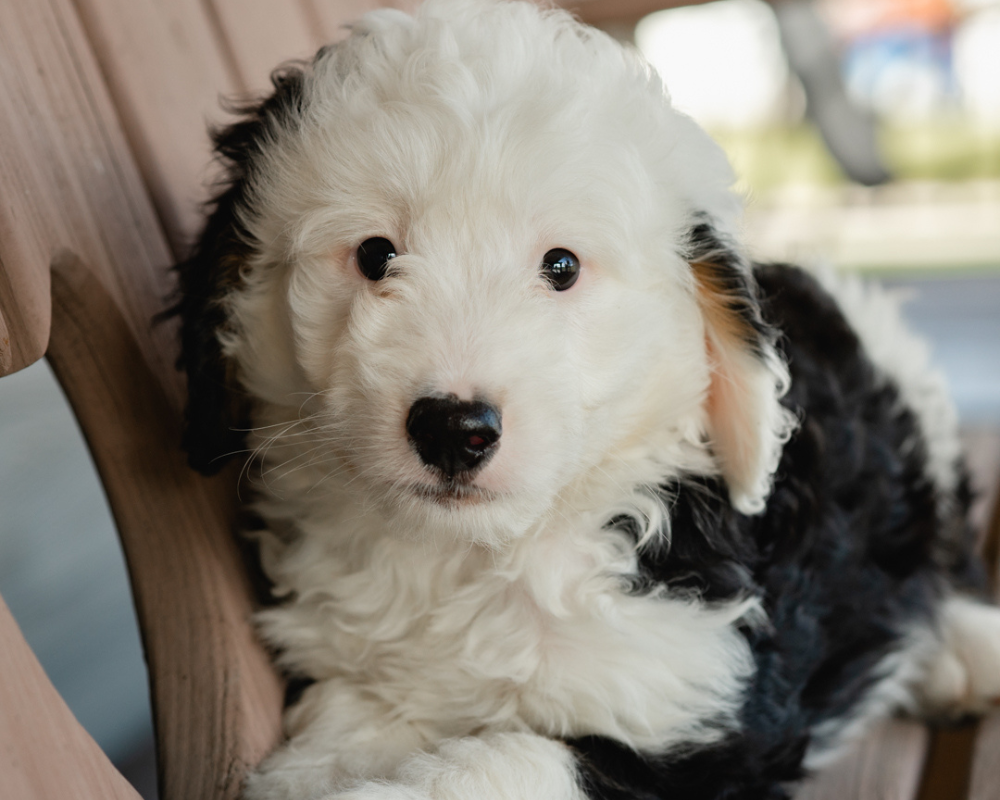
Is Pica Common in Bernedoodles?
Share
Bernedoodles, with their striking appearance and friendly demeanor, have captured the hearts of many dog lovers worldwide. However, like all breeds, they come with their unique set of behaviors and health concerns. One such behavior that has garnered attention among Bernedoodle owners is pica.
Pica can occur in Bernedoodles, though its prevalence isn't extensively studied. Like any breed, Bernedoodles may exhibit pica due to genetic predispositions, nutritional imbalances, anxiety, or environmental factors. Vigilance and addressing underlying causes are key to managing this behavior.
What is Pica?
Before delving into the specifics of pica in Bernedoodles, let's first understand what pica entails. Pica is a compulsive eating disorder characterized by the consumption of non-food items. These items can range from harmless substances like paper or grass to potentially harmful objects such as rocks, plastic, or metal. Pica is not exclusive to dogs; it can occur in humans and other animals as well.
What are the Different Terms Associated with Pica?
Navigating the world of pica, a compulsive eating disorder characterized by the consumption of non-food items, requires an understanding of its associated terms.
- Compulsive Behavior: Pica often manifests as a compulsive behavior, where the dog feels an uncontrollable urge to consume non-food items despite potential risks.
- Geophagia: This term specifically refers to the consumption of earthy substances such as soil, clay, or rocks, which is a common manifestation of pica in dogs.
- Coprophagia: While not directly related to pica, coprophagia involves the consumption of feces and can sometimes co-occur with pica in dogs.
- Nutritional Deficiencies: Pica behavior can sometimes be linked to nutritional deficiencies, where the dog attempts to fulfill its nutritional needs by consuming non-food items.
- Exploratory Behavior: In some cases, pica may stem from exploratory behavior, especially in puppies, who use their mouths to investigate the world around them.
Now that we have a foundational understanding of pica and its associated terms, let's explore its prevalence and manifestation in Bernedoodles.
Prevalence of Pica in Bernedoodles
While there is limited research specifically addressing the prevalence of pica in Bernedoodles, anecdotal evidence suggests that it can occur in this breed, as it can in any other. Bernedoodles are a hybrid breed, resulting from the crossbreeding of Bernese Mountain Dogs and Poodles. While they inherit many desirable traits from their parent breeds, they may also inherit certain predispositions to behavioral issues, including pica.
What Causes Pica in Bernedoodles?
Understanding the underlying causes of pica in Bernedoodles is crucial for effective management and prevention. Several factors may contribute to the development of pica in dogs, including:
- Genetic Predisposition: Like many other behaviors, pica can have a genetic component. Certain breeds may be more prone to developing pica than others, although individual variation exists within breeds.
- Boredom and Anxiety: Dogs that are under-stimulated or experiencing anxiety may engage in pica as a form of self-soothing or as a way to alleviate boredom.
- Nutritional Deficiencies: In some cases, pica may be a result of nutritional imbalances or deficiencies. Dogs may instinctively seek out non-food items in an attempt to obtain nutrients that are lacking in their diet.
- Medical Conditions: Certain medical conditions, such as gastrointestinal disorders or neurological abnormalities, may predispose dogs to pica. It's essential to rule out any underlying health issues when addressing pica behavior.
- Environmental Factors: Environmental factors, such as living conditions, access to appropriate toys and chews, and socialization experiences, can also influence the development of pica in Bernedoodles.
What are the Symptoms of Pica in Bernedoodles?
Identifying the symptoms of pica is crucial for early intervention and management. Some common signs of pica in Bernedoodles include:
- Consumption of Non-Food Items: The most obvious symptom of pica is the ingestion of non-food items, which can include anything from rocks and sticks to clothing or household objects.
- Vomiting or Gastrointestinal Issues: Ingesting non-food items can lead to gastrointestinal distress, including vomiting, diarrhea, or obstruction, depending on the item consumed.
- Behavioral Changes: Dogs with pica may exhibit changes in behavior, such as increased restlessness, anxiety, or obsessive-compulsive tendencies related to their consumption habits.
- Weight Loss or Poor Condition: In severe cases, chronic pica can lead to nutritional deficiencies, weight loss, and poor body condition due to the inadequate intake of proper nutrients.
How to Manage Pica in Bernedoodles?
Addressing pica in Bernedoodles requires a multifaceted approach that addresses both the underlying causes and the behavioral symptoms. Some strategies for managing pica in Bernedoodles include:
- Provide Mental and Physical Stimulation: Ensuring that Bernedoodles receive adequate mental and physical exercise can help alleviate boredom and reduce the likelihood of pica behavior.
- Offer Safe Chew Toys and Treats: Providing appropriate chew toys and treats can redirect the dog's chewing behavior towards safe and acceptable items.
- Monitor Diet and Nutrition: Working with a veterinarian to ensure that Bernedoodles are receiving a balanced and nutritious diet can help address any underlying nutritional deficiencies that may contribute to pica.
- Behavior Modification Techniques: Utilizing positive reinforcement training techniques can help modify pica behavior and encourage more appropriate chewing habits.
- Environmental Management: Minimizing access to non-food items and creating a safe and enriching environment for Bernedoodles can help reduce opportunities for pica behavior to occur.
Should You Be Concerned if Your Dog Has Pica?
Yes, if your dog exhibits symptoms of pica, it is essential to take the matter seriously and seek veterinary advice. Pica can pose significant health risks to dogs, ranging from gastrointestinal blockages and perforations to nutritional deficiencies and poisoning. Ingesting non-food items can lead to serious medical complications that require immediate intervention, including surgical removal of foreign objects or intensive medical treatment for poisoning. Additionally, pica may indicate underlying behavioral or medical issues that need to be addressed to ensure the well-being and safety of your dog.
Furthermore, untreated pica can have detrimental effects on your dog's quality of life and may impact their overall health and longevity. Chronic pica behavior can lead to persistent discomfort, pain, and malnutrition, compromising your dog's physical and emotional well-being. By addressing pica promptly and comprehensively, you can help prevent potential health complications and improve your dog's quality of life. Consulting with a veterinarian and implementing appropriate management strategies are crucial steps in managing pica and ensuring the optimal health and happiness of your canine companion.
While pica may not be as commonly discussed in Bernedoodles as in some other breeds, it is essential for Bernedoodle owners to be aware of this behavior and its potential implications. By understanding the causes, symptoms, and management strategies associated with pica, owners can take proactive steps to ensure the health and well-being of their beloved pets. Consulting with a veterinarian or professional dog trainer can provide valuable guidance and support in addressing pica behavior and promoting a happy and fulfilling life for Bernedoodles.
